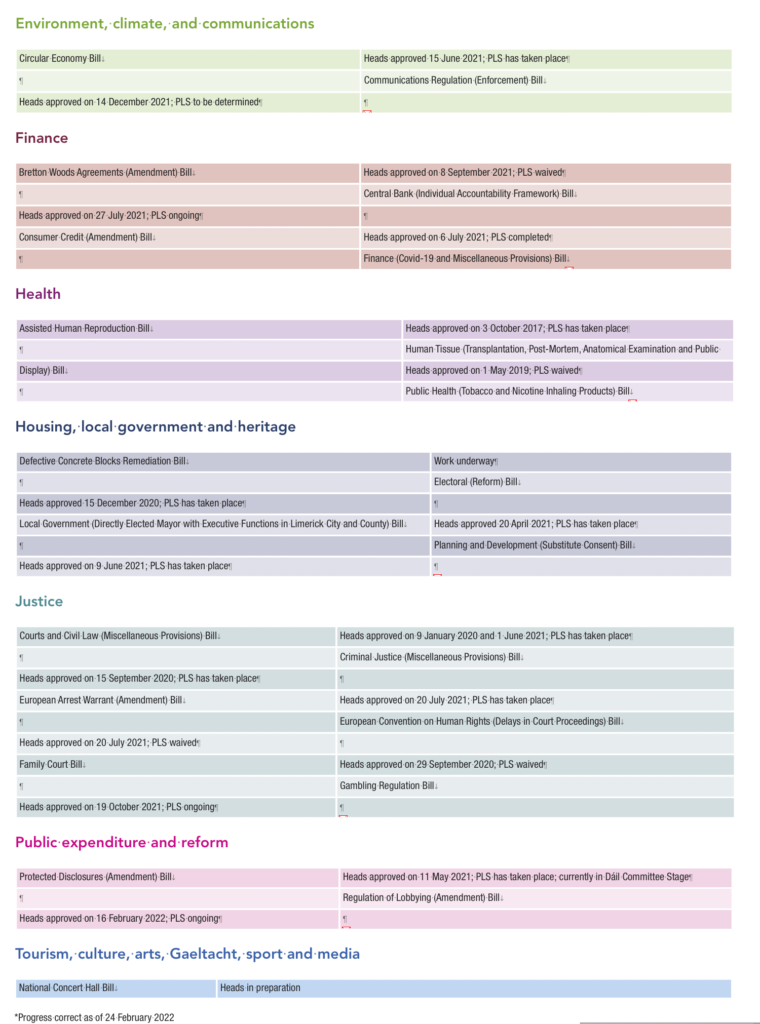Spring Legislative Programme

Published by Government Chief Whip Jack Chambers TD in late-January 2022, the Spring Legislative Programme contains 44 bills for prioritisation by government ministers.
The Legislation Programme contains the following:
- priority legislation for the spring session (44);
- all other legislation (91);
- bills currently on the Dáil and Seanad order papers (18);
- bills published since the current Government entered office (83); and
- bills enacted since the Government entered office (80).
Upon publication of the programme, Chambers said: “The bills prioritised will enable our country to continue to overcome the immediate challenges we face including the Covid-19 pandemic but since taking office the Government has also sought to prioritise legislation, policies and initiatives to deliver on our medium and long term policy objectives contained in the Programme for Government so we can embrace opportunities like enhancing our climate ambition, delivering on housing, protecting workers, growing businesses and ensuring our economy and society can thrive once more.”
Priority pieces of legislation for the forthcoming term as highlighted by Chambers are:
- Work-life Balance Bill and the Right to Request Remote Work Bill;
- Electricity Costs (Domestic Electricity Account Holders) Emergency Measures Bill;
- Consumer Rights Bill;
- Gambling Regulation Bill;
- Garda Síochána (Digital Recording) Bill and the Policing, Security and Community Safety Bill;
- Public Health (Tobacco and Nicotine Inhaling Products) Bill; and
- Defective Concrete Blocks Remediation Bill.







